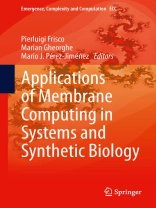Membrane Computing was introduced as a computational paradigm in Natural Computing. The models introduced, called Membrane (or P) Systems, provide a coherent platform to describe and study living cells as computational systems. Membrane Systems have been investigated for their computational aspects and employed to model problems in other fields, like: Computer Science, Linguistics, Biology, Economy, Computer Graphics, Robotics, etc. Their inherent parallelism, heterogeneity and intrinsic versatility allow them to model a broad range of processes and phenomena, being also an efficient means to solve and analyze problems in a novel way.
Membrane Computing has been used to model biological systems, becoming with time a thorough modeling paradigm comparable, in its modeling and predicting capabilities, to more established models in this area. This book is the result of the need to collect, in an organic way, different facets of this paradigm.
The chapters of this book, together with the web pages accompanying them, present different applications of Membrane Systems to Biology. Deterministic, non-deterministic and stochastic systems paired with different algorithms and methodologies show the full potential of this framework.
The book is addressed to researchers interested in applications of discrete biological models and the interplay between Membrane Systems and other approaches to analyze complex systems.
İçerik tablosu
From the Contents: A P Systems based Tool for Systems and Synthetic Biology.- Statistical Model Checking of Membrane Systems with Peripheral Proteins: Quantifying the Role of Estrogen in Cellular Mitosis and DNA Damage.- Molecular Diffusion and Compartmentalization in Signal Transduction Pathways: An Application of Membrane Systems to the Study of Bacterial Chemotaxis.












